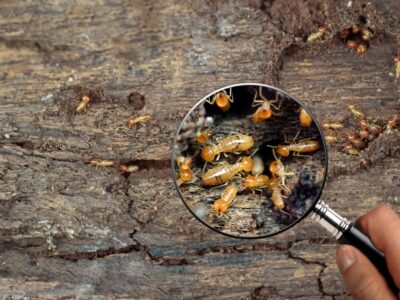The evening bat is one of the few bats that regularly has twins
Advertisement
Evening Bat Scientific Classification
- Kingdom
- Animalia
- Phylum
- Chordata
- Class
- Mammalia
- Order
- Chiroptera
- Family
- Vespertilionidae
- Genus
- Nycticeius
- Scientific Name
- Nycticeius humeralis
Read our Complete Guide to Classification of Animals.
Evening Bat Conservation Status
Evening Bat Facts
- Prey
- Insects
- Name Of Young
- Pup
- Group Behavior
- Social
- Fun Fact
- The evening bat is one of the few bats that regularly has twins
- Estimated Population Size
- More than 100,000. Conservation status is least concern.
- Biggest Threat
- None
- Most Distinctive Feature
- That it’s a flying mammal
- Gestation Period
- 30 to 36 days
- Litter Size
- Two
- Habitat
- Forests, wetlands, open areas
- Diet for this Fish
- Carnivore
- Type
- Mammal
- Common Name
- Evening bat
- Number Of Species
- 1
- Location
- United States
- Group
- Colony
Evening Bat Physical Characteristics
- Color
- Dark Brown
- Light Grey
- Skin Type
- Fur
- Top Speed
- 38 mph
- Lifespan
- Six years or less
- Weight
- 0.21 to 0.49 ounces
- Length
- 3.39 to 4.13 inches, females larger than males
- Age of Sexual Maturity
- 10 months
- Age of Weaning
- 42 days
View all of the Evening Bat images!
Reproduction in evening bats is a bit unusual and a bit hair-raising. A female evening bat gives birth to twins whose total weight is half as much as hers. This is one of the largest babies to maternal size ratios in the animal kingdom and the largest among bats.
Small in size, this unassuming bat is a friend to farmers, gardeners, and even people out of an evening stroll, for it eats insect pests. Indeed, this tiny mammal can eat its own body weight in insects, including beetles that eat leaves and stems and whose grubs chew on roots, flies, mosquitoes, and leafhoppers. It is a bat of the United States, and the good news is that its population is stable and increasing, and it has very few threats. It does not even seem subject to the devastating white nose syndrome that has killed so many of its fellow bats. Read on to learn more facts about this curious little animal.
Evening Bat Scientific Name
The bat’s scientific name is Nycticeius humeralis. Nycticeius is a Greek and Latin word that means “belongs to the night.” Humeralis means “wearing a cape” in Latin. This is probably due to how the silver-tipped fur of the bat’s back resembles a cape. There are three subspecies:
- Nycticeius humeralis humeralis
- Nycticeius humeralis mexicanus
- Nycticeius humeralis subtropicalis
Evening Bat Appearance
N. humeralis has the characteristics of a plain little bat. It is basically brown all over, though some have been found with white fur. Its ears are black, and like most bats, the membranes in its wings and tail are naked. It has a round head and powerful jaws. Of small size, most are between 3.39 to 4.13 inches long, weigh between 0.21 and 0.49 ounces, and have a wingspan of 10 to 11 inches. Females are bigger than males. Identification can be tricky because this bat is readily mistaken for bats in the Myotis genus. Characteristics such as the shape of a structure in the ear tell an evening bat from, say the little brown bat.
N. humeralis has 30 teeth. Each side of the jaw has one upper incisor and four molariform teeth. This is a little different from the typical way teeth are arranged, or the dentition of the Vespertilionidae family.

Evening bats are brown all over, have black ears, and naked membranes on their wings and tail.
©Public Domain – License
Evening Bat Behavior
Evening bats are active at night and can be seen flying high in the sky during the early part of the night and lower as the night goes on. Because it is dark, they use echolocation to find their insect prey. The flight of the evening bat is described as slow but steady and is one of the characteristics that can help in their identification.
Biologists used to believe that these bats didn’t migrate, but the females in the north go south for the winter. Only the females migrate while the males stay in the southern part of their range all year.
These bats live in colonies that can hold about 30 animals, but in the spring the size of maternity colonies can grow to hundreds of mothers and their pups. No grown male bats live in these colonies, for the sexes only come together to mate. Though there are hundreds of babies in a colony, mothers who come home from foraging can find their own pups through sound and smell.
Evening Bat Habitat
Scientists don’t know how large the home ranges are for evening bats, but they do know that they prefer the forest, areas along the rivers, wetlands, and open spaces. These bats don’t roost in caves but in tree cavities and even under tree bark. They’ll also roost in buildings.
Evening Bat Diet
Evening bats are insectivores, but the insects they specialize in depending on where they live. In Indiana, where the bat is endangered, the favored prey is the cucumber beetle, which is a serious pest. Other insects on the bat’s diet are flying ants, bugs, moths, and scarabs. Interestingly, if the evening bat shares a range with other bats, they avoid competition by eating different types of insects.
One endearing characteristic of the evening bat is that if it’s not having much success hunting, it will follow a group of bats to a location where prey is more plentiful.
Evening Bat Predators and Threats
This little bat has a variety of predators, including snakes, raccoons, and birds of prey such as hawks and owls. Fortunately, the evening bat is not subject to white-nose syndrome, a disease that is decimating the number of bats that hibernate in caves. This has allowed the evening bat to increase its range into places where the population of other bats has collapsed.
Evening Bat Reproduction and Life Cycle
These bats breed in the fall. A male bat can mate with as many as 20 females, then he leaves. The females don’t give birth until spring. This isn’t because the bat’s pregnancy is that long but because the female stores the sperm in her body until spring. This is when she ovulates and when fertilization finally takes place. Delayed fertilization is a fairly common reproductive strategy of bats.
Evening bats are a little unusual for bats because they most often give birth to twins. Now and then a female will even have triplets. Biologists believe that the rigors of reproduction are why the evening bat has such a short lifespan. Other bats can live as long as 40 years, but N. humeralis is lucky to live to six. Indeed, the lifespan in the wild is about two years.
Some facts about baby evening bats are that they are born naked and blind and open their eyes about a day after they’re born. They take up flying when they’re around three weeks old and are weaned when they’re between six and nine weeks old. Sometimes, pups are nursed by females who are not their mothers.
Males leave the colony when they are weaned. Females stay with the colony and give birth to their own pups there. These bats are ready to reproduce when they’re about 10 months old.
Evening Bat Population
Biologists aren’t sure of the number of evening bats, but they do know that there are at least 100,000, and overall the population is secure.
View all 117 animals that start with EEvening Bat FAQs (Frequently Asked Questions)
Are Evening bats carnivores, herbivores, or omnivores?
Evening bats are carnivores. Specifically, they are insectivores. Interestingly, if they share a range with other species of bats they all eat different types of insects so as not to compete with each other.
What is an evening bat?
An evening bat is a tiny bat that hunts at night. Its range is the eastern and midwestern areas of the United States. There are three subspecies.
Are evening bats endangered?
Evening bats are not endangered in most locations, though their status is endangered in Indiana. They are a species of special interest in Ohio and threatened in Kentucky and Michigan.
Are evening bats dangerous?
Healthy evening bats aren’t dangerous, but they can transmit rabies. This makes them dangerous if they live in attics and other places of human habitation.
Why is the evening bat important?
Evening bats are important because they eat so many insects, including insects that damage crops and spread diseases, such as mosquitoes.
What does an evening bat look like?
An evening bat is a roundish little animal with large ears. The fur on its back is brown tipped with gray, and the fur on its underparts is dark brown. It has a face that resembles that of a dog and large facial glands. It has an unkeeled calcar, which is a cartilage spur that comes out of its ankle and runs along the wing membrane. This is one of the characteristics, along with the round tragus in its ear, that helps with identification.
How big do evening bats get?
They only grow to around 3.39 to 4.13 inches in length.
Are evening bats aggressive?
Healthy evening bats are not known for being aggressive.
How do I build an evening bat house?
Evening bats don’t roost in caves, but in trees that grow in their habitat, so it is important to use the right wood to build a bat house. It is best if the wood is stained a dark color, which holds in warmth and mimics the bark of the trees the bats like to hide beneath. It’s also important that the wood not be pressure treated, for the chemicals can harm the animals.
First, cut the wood to the right size, add grooves to the back and stain the inside. Then screw on the sides, the top, and the roof, and caulk them. This might take about six hours. Prime and paint the house, then mount it high up on a pole or under the eaves of a building. The house needs to be high up so the bats can have room to drop before they start to fly.
How much does an evening bat weigh?
A grown evening bat weighs between 0.21 and 0.49 ounces.
Thank you for reading! Have some feedback for us? Contact the AZ Animals editorial team.
Sources
- Wikipedia, Available here: https://en.wikipedia.org/wiki/Evening_bat
- NatureServe Explorer, Available here: https://explorer.natureserve.org/Taxon/ELEMENT_GLOBAL.2.799511/Nycticeius_humeralis
- ITIS, Available here: https://www.itis.gov/servlet/SingleRpt/SingleRpt?search_topic=TSN&search_value=180022#null
- Wikipedia, Available here: https://en.wikipedia.org/wiki/Vespertilionidae
- U.S. Department of the Interior, Available here: https://www.doi.gov/blog/13-facts-about-bats
- Texas Parks and Wildlife, Available here: https://tpwd.texas.gov/huntwild/wild/species/evening/

















